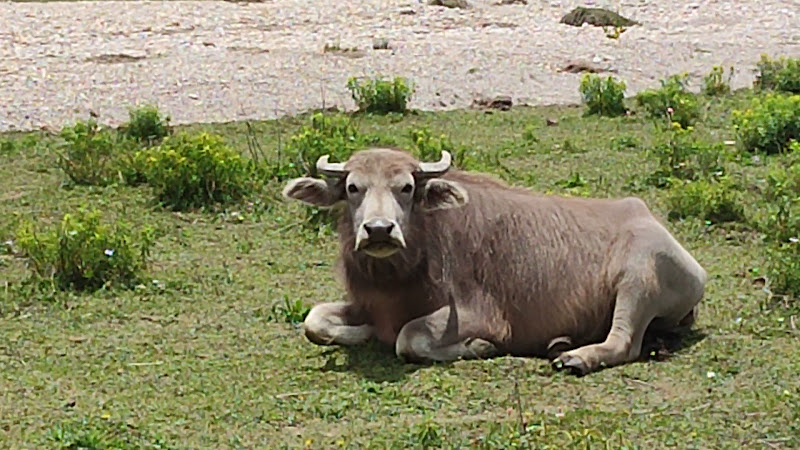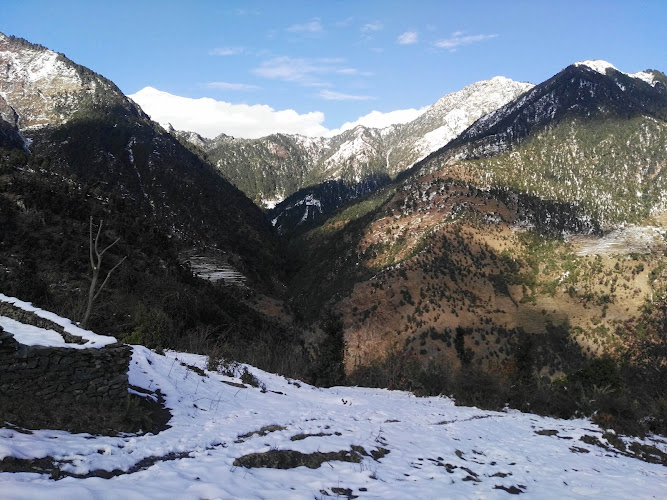


DHORPATAN HUNTING RESERVE - Blue Sheep Trophy Hunting & High-Altitude Wilderness
22000
Nepal's only hunting reserve represents a conservation approach that makes many Western environmentalists uncomfortable: protecting wildlife partly by allowing controlled killing of it. Established in 1983 and formally gazetted in 1987, Dhorpatan Hunting Reserve sprawls across 1,325 square kilometers in the Dhaulagiri Himal range where Rukum, Myagdi, and Baglung districts converge, creating high-altitude habitat for 852 blue sheep—the Himalayan blue sheep or bharal whose magnificent curved horns make them one of Asia's most coveted hunting trophies. Under strictly controlled permits issued to foreign hunters willing to pay $7,000-12,000 per animal plus guide fees and logistics, a handful of blue sheep and Himalayan tahr are harvested annually, generating revenue that supports local communities and anti-poaching efforts while maintaining populations at sustainable levels.
The hunting model follows principles established across Africa and North America where trophy fees fund conservation and provide local economic incentives for wildlife protection. Each permit allows harvest of one blue sheep or tahr, with quotas set conservatively based on population surveys ensuring that removals don't impact breeding populations. The fees dwarf any income villagers could earn from livestock or agriculture on these barren high slopes, creating constituencies supporting the reserve rather than viewing wildlife as competition for scarce grazing. Critics argue that killing endangered species cannot qualify as conservation regardless of population management rationales, while supporters counter that Dhorpatan's wildlife thrives precisely because local communities profit from its existence.
Beyond trophy species, the reserve shelters 137 bird species including pheasant and partridge populations robust enough to permit controlled hunting, plus endangered mammals like musk deer, wolves, red pandas, cheer pheasants, and Nepal's national bird, the iridescent danphe or Himalayan monal. Leopards, goral, serow, Himalayan black bears, barking deer, wild boar, rhesus macaques, langurs, and mouse hares populate ecosystems ranging from 2,850 meters to over 5,500 meters elevation. The dramatic altitude gradient creates habitat diversity supporting species assemblages found in few other protected areas.
The landscape itself justifies protection independent of hunting debates. High-altitude grasslands and shrublands stretch across rolling terrain punctuated by rocky outcrops and glacial streams. Rhododendron thickets explode with pink and red blooms each spring at mid-elevations, while alpine meadows above tree line host wildflowers during brief summer growing seasons. Snow leopards prowl the highest reaches though sightings remain rare given the cats' elusive nature and low densities across even prime habitat.
Access demands multi-day treks from roadheads, filtering out casual visitors and ensuring that only serious hunters and adventurous trekkers make the journey. Basic camping infrastructure serves hunting parties, while independent trekkers must be fully self-sufficient with tents, food, and navigation skills. The isolation preserves wilderness character impossible to maintain in more accessible protected areas, though it also complicates enforcement and monitoring.
Conservation challenges include balancing sustainable hunting with population viability, preventing illegal poaching beyond permitted harvests, and managing grazing pressures from domestic livestock that compete with wild herbivores for forage. Climate change manifests through altered precipitation patterns, glacier retreat, and vegetation zone shifts that may affect species distributions and habitat quality. Yet Dhorpatan endures as proof that conservation models must adapt to local contexts—what works in Kathmandu Valley may not work in remote western mountains where communities demand tangible benefits from wildlife protection.
Whether hunting belongs in modern conservation will remain debated, but Dhorpatan's blue sheep populations demonstrate that well-regulated trophy hunting can coexist with species protection when permits remain limited, fees support conservation, and local communities benefit economically. In regions where tourism infrastructure cannot develop and ecotourism revenues will never materialize, trophy fees may provide the only realistic economic incentive for communities to tolerate wildlife rather than exterminate it. Dhorpatan tests this proposition in one of Nepal's most remote corners, where blue sheep still graze high meadows and snow leopards hunt blue sheep, and occasionally a foreign hunter pays enough money for one ram to fund a village's conservation efforts for months.
Park Features & Amenities
♿ Accessibility
- ✓ Wheelchair-accessible car park
- ✓ Wheelchair-accessible entrance
🏃 Activities
- ✓ Hiking
🏗️ Amenities
- ✓ Barbecue grill
- ✓ Picnic tables
- ✓ Public toilet
- ✓ Swings
- ✓ Volleyball court
🎠 Children
- ✓ Good for kids
- ✓ Kid-friendly hikes
- ✓ Playground
🐕 Pets
- ✓ Dogs allowed
Visitor Information
🕐 Best Times to Visit
Spring (Mar-May): Pleasant weather, blooming flowers
Autumn (Sep-Nov): Clear skies, comfortable temperatures
Early Morning: Best for wildlife viewing and photography
🗺️ Getting There
By Car: 22000
Public Transport: Local buses and taxis available
Walking: Check distance from city center
💡 Visitor Tips
• Bring water and sun protection
• Wear comfortable walking shoes
• Check weather conditions before visiting
• Bring camera for nature photography
Explore More in Nepal
Nearby Attractions
Ready to Visit DHORPATAN HUNTING RESERVE?
Plan your visit to this amazing destination with our comprehensive travel guide and insider tips.
Seasonal Travel Guide
Weather & Best Time
Winter brings cool temperatures (5-15°C) with clear skies and snow-capped peaks. Perfect for mountain views but cold at higher altitudes.
Best Activities:
- Mountain viewing
- Cultural experiences
- Spa and hot springs
- Photography of snow peaks
- Indoor cultural activities
Travel Tips
- Visit during December-February for snow-capped views
- Pack warm clothing for cold temperatures
- Book hotels with heating facilities
- Plan for shorter daylight hours
Packing Suggestions:
- Warm winter clothing
- Thermal layers
- Warm hat and gloves
- Sturdy winter boots
- Hot water bottle
Quick Facts
Best time: Autumn (Sep-Nov)
Duration: 1-3 days
Difficulty: Easy
Cost: Budget-friendly